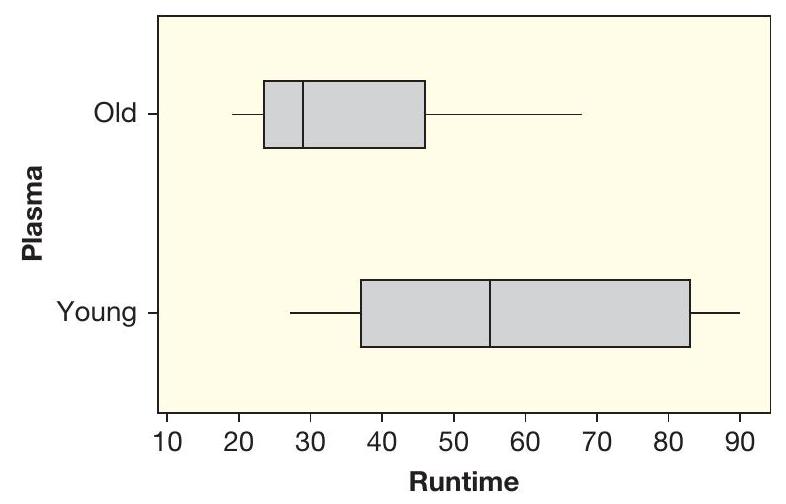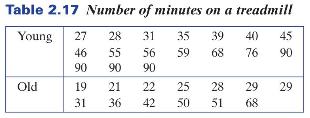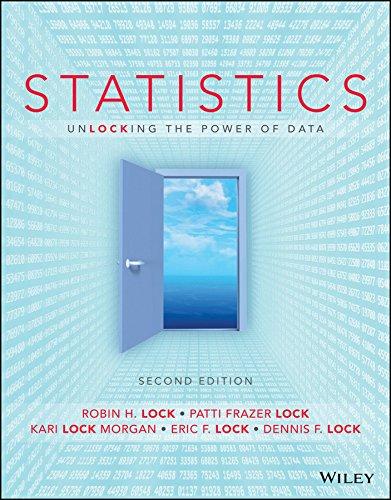Young Blood Helps Old Brains Exercise 2.69 introduces a study in which old mice were randomly assigned
Question:
Young Blood Helps Old Brains Exercise 2.69 introduces a study in which old mice were randomly assigned to receive transfusions of blood from either young mice or old mice. Researchers then measured, among other things, the number of minutes each mouse was able to run on a treadmill. The results are given in the side-by-side boxplots in Figure 2.40,
(a) Estimate the median runtime for the mice receiving old blood.

Figure 2.40 Minutes on a treadmill after receiving blood from old or young mice
(b) Do we expect the mean runtime for the mice receiving old blood to be larger than, smaller than, or about the same as the median for these mice?
(c) Which group of mice, those receiving old blood or those receiving young blood, appear to be able to run for more minutes?
(d) Does there appear to be an association between runtime and whether or not the mouse received young blood or old blood?
(e) Are there any outliers in either group? If so, which one(s)?
Data From Exercise 2.69:
Can young blood help old brains? Several studies in mice indicate that it might. In the studies, old mice (equivalent to about a 70-year-old person) were randomly assigned to receive blood plasma either from a young mouse (equivalent to about a 25 -year-old person) or another old mouse. The mice receiving the young blood showed multiple signs of a reversal of brain aging. One of the studies measured exercise endurance using maximum treadmill runtime in a 90 -minute window. The number of minutes of runtime are given in Table 2.17 for the 17 mice receiving plasma from young mice and the 13 mice receiving plasma from old mice. The data are also available in YoungBlood.
Step by Step Answer:

Statistics, Enhanced Unlocking The Power Of Data
ISBN: 9781119308843
2nd Edition
Authors: Robin H Lock, Patti Frazer Lock, Kari Lock Morgan, Eric F Lock, Dennis F Lock





